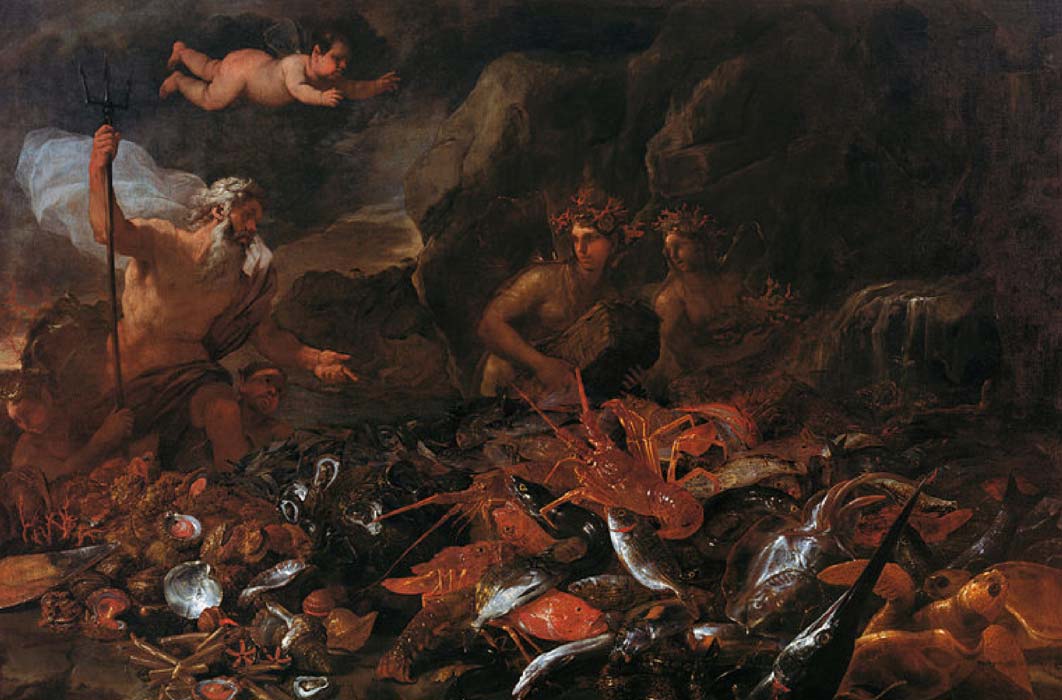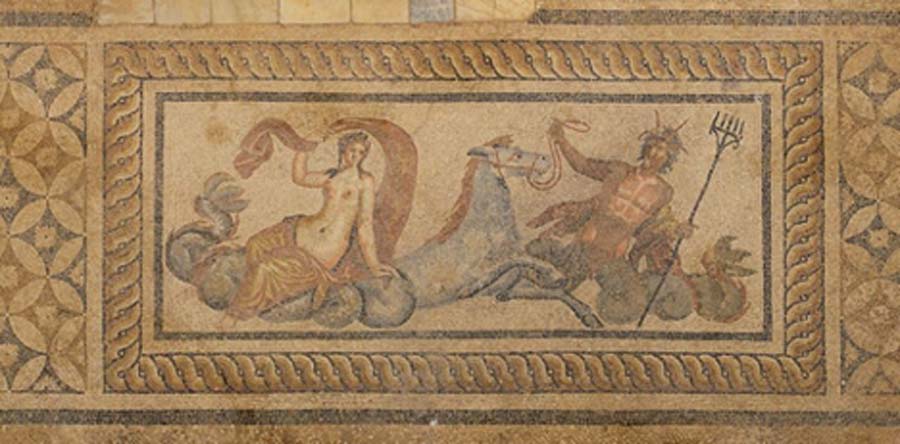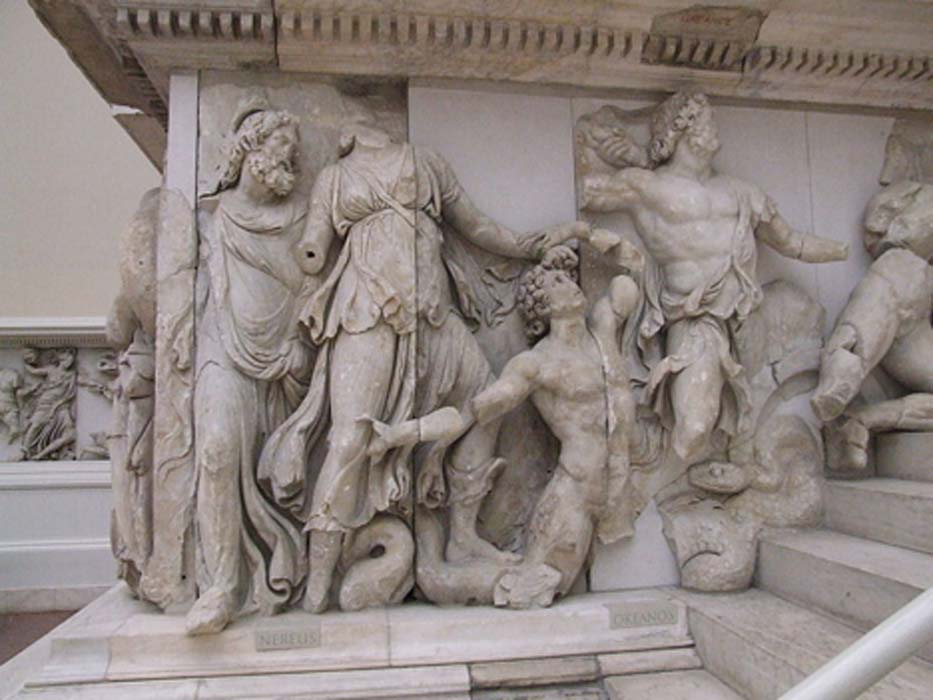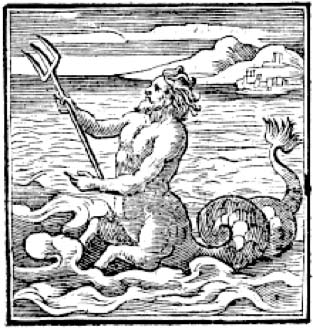
The Old Man of the Sea: Shape Shifting in Service of Poseidon
Described as elusive and difficult to pinpoint, the ‘Old Man of the Sea’ may take on many names in mythology, but he embodies the virtues of truth and justice, until he was usurped by a sinister character who made a nuisance of himself by latching on to men, like an irritating conscience, which one could only be rid of by inebriation.

Second Century Nereid Mosaic From Hillside Houses of Ephesus ( CC BY-SA 2.0)
The fourth book of Homer’s Odyssey says that: “when the sun hath reached mid-heaven, the unerring Old Man of the Sea is wont to come forth from the brine at the breath of the West Wind, hidden by the dark ripple.” In the same work, the sea-nymph Eidothea identifies her father Proteus as, “an old immortal who lives under the sea”. Proteus is the righthand man of Poseidon and like the modern science of bathymetry, knows every inch of the seabed. If a traveler manages to capture and restrain him, Proteus can answer any questions they may pose about their voyage, which course to follow and how to sail to reach home. He can even inform them of all that has happened at their homes during their absence. However, capturing the willy sea god means holding on tightly as he is a shape shifter and transforms easily from one form to another.

Nereus in a frieze of the Pergamon Altar (Berlin).(CC BY-SA 3.0)
The title of the ‘Old Man of the Sea’ does not seem to be confined to just one being. Although Homer is adamant that the old man of the sea is Proteus, Hesiod’s Theogony refers to the Nereids (sea nymphs) as daughters of, “Nereus, the Old Man of the Sea”. In a completely different Middle-Eastern culture, the ‘Old Man of the Sea’ is described as a rather more sinister figure. In the tale of Sinbad the Sailor he is said to trick a traveler into allowing him to ride on his shoulders while the traveler transports him across a stream. However, the old man would then not release his grip, forcing his victim to transport him wherever he pleases and he allows his victim little respite.
Proteus and Nereus, Prophetic Old Men of the Sea
Oceanus, one of the old sea-gods, was a Titan who aided Zeus in the great war of the gods. When Poseidon became the new god of the sea, Oceanus and his many children were subjugated to Poseidon, in ruling the great ocean and the other waters of the earth. One of the many children of Oceanus was Proteus. Proteus’ duty was to care for Poseidon’s sea-calves. Proteus would lead the sea-calves up on the land every day where they would lay down to sleep on the rocks and bathe in the sun on the warm shore. He was a very old man with long gray hair, his body covered with the foam of the ocean and his beard covered in seaweed.

Illustration of Proteus by Andrea Alciato from The Book of Emblems (1531) (Public Domain)




